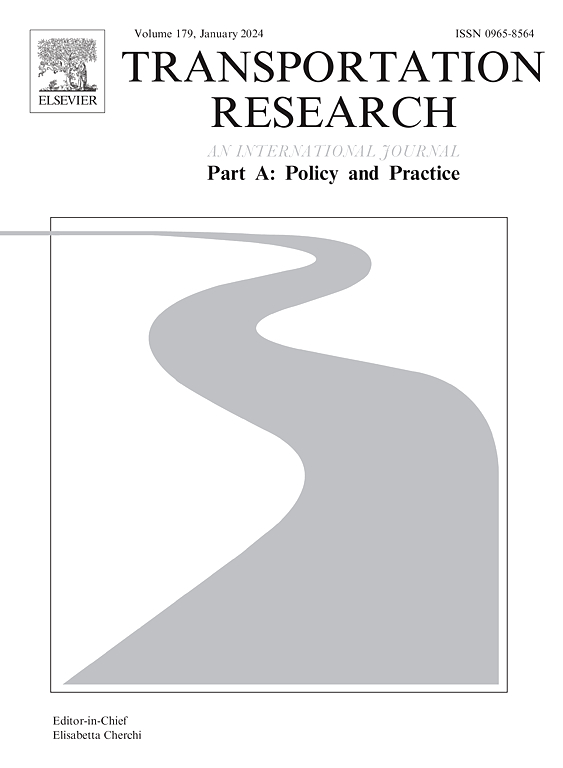已确定的汽车拥有量的环境相关因素能否作为实用的规划工具?
IF 6.3
1区 工程技术
Q1 ECONOMICS
Transportation Research Part A-Policy and Practice
Pub Date : 2024-11-16
DOI:10.1016/j.tra.2024.104304
引用次数: 0
摘要
以往的研究表明,改善建筑环境属性(如密集开发和交通便利)有可能减少汽车拥有量。然而,大多数研究都忽略了可能存在的高原关联,即随着建筑环境变量在一定范围内的增加,汽车保有量几乎没有变化。本研究将梯度提升决策树应用于明尼阿波利斯-圣保罗大都会区的数据,揭示了建筑环境属性与汽车保有量之间复杂的非线性关系。研究结果表明,虽然人口密度和交叉路口密度与汽车保有量呈负相关,但在这两个变量的中间范围内,汽车保有量几乎没有变化。这些高原关联表明,在规划实践中,通过提高人口密度和交叉口密度来降低汽车拥有率具有挑战性。相比之下,将人口增长引向中心城市和内环郊区以及提高公交站点密度是更有前景的干预措施。本文章由计算机程序翻译,如有差异,请以英文原文为准。
Can an identified environmental correlate of car ownership serve as a practical planning tool?
Previous studies suggest that improving built environment attributes (such as dense development and transit access) has the potential to reduce car ownership. However, most of them overlook the possible plateau association, in which car ownership shows little change as a built environment variable increases within a certain range . Applying gradient boosting decision trees to data from the Minneapolis-St. Paul metropolitan area, this study reveals the complex nonlinear relationships between built environment attributes and car ownership. The results show that although population density and intersection density are strongly and negatively related to car ownership, car ownership exhibits little variation within the middle ranges of these two variables. These plateau associations suggest that reducing car ownership through population and intersection densification is challenging in planning practice. In contrast, directing population growth towards central cities and inner-inning suburbs and densifying transit stops are more promising interventions.
求助全文
通过发布文献求助,成功后即可免费获取论文全文。
去求助
来源期刊
CiteScore
13.20
自引率
7.80%
发文量
257
审稿时长
9.8 months
期刊介绍:
Transportation Research: Part A contains papers of general interest in all passenger and freight transportation modes: policy analysis, formulation and evaluation; planning; interaction with the political, socioeconomic and physical environment; design, management and evaluation of transportation systems. Topics are approached from any discipline or perspective: economics, engineering, sociology, psychology, etc. Case studies, survey and expository papers are included, as are articles which contribute to unification of the field, or to an understanding of the comparative aspects of different systems. Papers which assess the scope for technological innovation within a social or political framework are also published. The journal is international, and places equal emphasis on the problems of industrialized and non-industrialized regions.
Part A''s aims and scope are complementary to Transportation Research Part B: Methodological, Part C: Emerging Technologies and Part D: Transport and Environment. Part E: Logistics and Transportation Review. Part F: Traffic Psychology and Behaviour. The complete set forms the most cohesive and comprehensive reference of current research in transportation science.

 求助内容:
求助内容: 应助结果提醒方式:
应助结果提醒方式:


